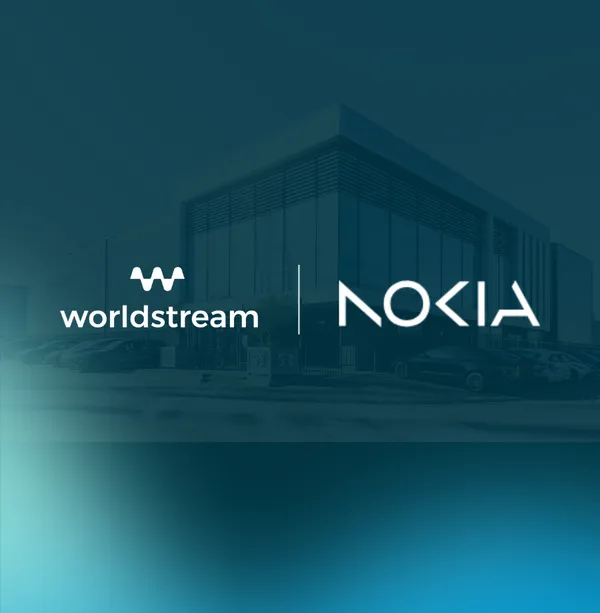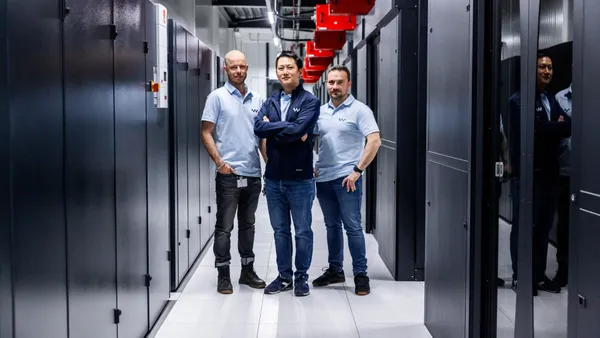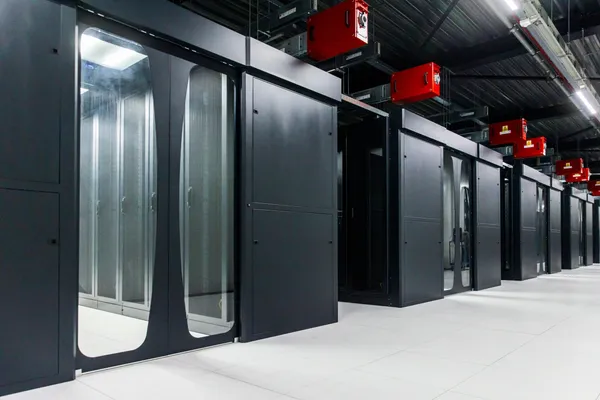Worldstream Identifies 6 Trends in the Global Hosting Industry

Knowledge blog

With a portfolio of Infrastructure-as-a-Service solutions that includes dedicated servers, DDoS protection, private and public cloud, data center colocation, and a wide spectrum of storage solutions, Worldstream caters to a wide range of customers regionally and worldwide. Our vast client experience has led us to identify six trends that you may find interesting to learn about. These trends have also driven us to refine our suite of IaaS solutions recently.
The 6 Global Hosting Industry Trends to Look Out for in 2024
As a fast growing Infrastructure-as-a-Service provider and a broad international client portfolio across a wide variety of industries we are constantly on the lookout for new trends. In this article we identify upcoming trends in the global hosting industry.
Executive Summary
As a global Infrastructure-as-a-Service (IaaS) provider with clients in various sectors, Worldstream has identified six key developments in the worldwide hosting sector that may show some understanding of current IT infrastructure needs and the dynamics of the market. Worldstream has also enhanced its IaaS solutions portfolio to better serve a variety of client requirements.
Acknowledging the ongoing need for affordable IT solutions, Worldstream has reacted by launching WS Cloud, our proprietary public cloud platform. By using Virtuozzo Hybrid Infrastructure and OpenStack cloud technologies, this public cloud platform represents a major advancement in providing reasonably priced, adaptable, and useful substitutes for the American hyperscale cloud providers. Interestingly, WS Cloud can save a significant amount of money on IT infrastructure costs – between 30% and 50% – without sacrificing performance or quality.
Another market trend identified by Worldstream is the growing need to install resources at the edge. To meet that need, Worldstream has a global network backbone with routes to all over the world. In addition, the software-defined Worldstream Elastic Network (WEN) provides even more flexibility and scalability to cost-effectively set up IT infrastructure at the edge. Worldstream is aware that filling in the distributed edge IT infrastructure need requires a strong network foundation.
To address the growing need for fast-to-implement, customized IT infrastructure solutions at an affordable price level, Worldstream has introduced offerings like our WS Cloud public cloud platform and ultra-fast dedicated server deployment. These solutions demonstrate Worldstream’s commitment to adaptability and agility, which are essential in today’s fast-paced business environment.
Another area in which Worldstream shines is the tendency toward hybrid IT and multi-cloud settings for security, flexibility, and cost-effectiveness. Worldstream is well-positioned to handle a wide variety of client demands in hybrid IT and multi-cloud strategies thanks to our relationships with key cloud platforms and the addition of the software-defined Worldstream Elastic Network (WEN) to its product line.
Lastly, the market’s transition towards effective, cloud-native application development is shown by the increasing interest in Platform-as-a-Service (PaaS) models. Realizing that PaaS may improve application development, save expenses, and promote innovation, Worldstream is investigating how to include PaaS (powered by Virtuozzo) into our IaaS offerings.
1. Reducing the Costs Associated with the IT Infrastructure
We see a significant need for further cost reductions in the development and management of IT systems. This might be an ongoing worry for companies trying to save costs. However, we would want to classify this as a trend, particularly given that we have consistently provided our IaaS solutions at a very competitive price/quality ratio and that, particularly in the past two years, we have seen a demand for even greater savings from our customers.
The R&D engineering team at Worldstream aims to provide cloud alternatives for our clients in addition to less expensive variations of the dedicated server options in our portfolio. Initially, by creating a special private cloud solution. Once operational, this private cloud solution may offer cost advantages to clients with certain sized IT infrastructures. However, we also see that entrance remained a barrier, particularly for startups and small- to medium-sized business (SMB) clients. While Worldstream’s private cloud is a hosted solution that doesn’t require a significant upfront investment in physical infrastructure, it still requires some upfront costs that take time to pay off. This private cloud computing solution offers ample benefits, such as data compliance, functionality, flexibility, and an acceptable security level. Customers do not, however, immediately reap the financial rewards in the short term.
Last year we introduced our own public cloud architecture, dubbed WS Cloud. In response to customers’ ongoing requests for cost savings as well as to provide them with an affordable substitute for the well-known hyperscalers that still offers the necessary flexibility and functionality. At the same time, we should note that it is not necessarily a replacement for hyperscale cloud providers. Hyperscale cloud may still be a part of our clients’ hybrid IT concepts and can be accessed via the dedicated, fast, and secure cloud on-ramps that we provide to our clients.
With the help of OpenStack cloud technology and ‘Virtuozzo Hybrid Infrastructure,’ Worldstream constructed this new WS Cloud public cloud platform. It allows us to join the market with a public cloud platform quite quickly. Fully PCI-DSS and ISO (9001, 27001, and 14001) certified, WS Cloud provides our channel partners with a scalable cloud resource pool for a set monthly charge. The new WS Cloud public cloud platform provides partners with extensive capabilities, such as simple-to-use administration tools, integrated firewalls, VPNs, load balancing, and more. Early customers turned out to be really happy with the new WS Cloud platform, particularly with regard to the storage performance. In addition, this European public cloud infrastructure may provide our clients with savings anywhere from 30% to 50% on infrastructure expenses overall. It’s okay for some partners though to maintain their production environments on our VMware cloud Ultimately, it’s a matter of preference. However, by switching to our Virtuozzo-based public cloud for their application development, testing, and acceptance environments, for example, they may save a significant amount of money.
2. Deploying IT Resources ‘At the Edge’
Another market trend Worldstream identifies among its global clientele is the increased use of distributed edge infrastructure, which is changing how companies’ IT infrastructures and business operations function in a variety of industries. Network infrastructure is central to this adoption trend of distributed edge infrastructure. However, only a robust network backbone may satisfy the distributed needs of modern applications such as remote working, the Internet of Things (IoT), as well as video collaboration and Unified Communications solutions.
Organizations with distributed IT infrastructures, utilizing it to integrate their corporate headquarters for instance with branch offices, manufacturing facilities, and mobile workforces, or to connect customers worldwide and/or regionally with their services, strongly depend on the quality of the network in place supporting this infrastructure. A robust network design may significantly improve communication between geographically separated locations, which for example may allow for incorporating equipment and for real-time supply chain and inventory management updates. Infrastructure-as-a-Service (IaaS) providers such as Worldstream play a crucial role in supplying such a strong network foundation, boosting output, departmental coordination, and inter-system communication.
Well-executed deployment of distributed IT infrastructures may also bring data processing, analytics, and storage closer to the edge of the network. This may lead to a transformation of sectors like e-commerce, manufacturing, healthcare, gaming, SaaS, AdTech, FinTech, and agriculture since it facilitates faster decision-making and increases the efficiency of data processing. However, once again, a robust network backbone is crucial for distributed IT infrastructure applications to succeed.
Having high bandwidth capacity available for distributed IT infrastructures is essential for an optimized functioning of these infrastructures. Applications and websites with high network bandwidth will be able to withstand high traffic levels without sacrificing performance or user experience. This ability to support ample users at once may result in increased income potential and retention rates. High volumes of network bandwidth capacity may also help withstand DDoS attacks for example, enhancing the security posture of a distributed IT infrastructure.
For buffer-free transmission and an enhanced viewing or listening experience at the distributed edge of the network, high bandwidth is also needed for the surge in streaming audio and video content. Furthermore, a lot of bandwidth is usually required for effective Unified Communication as a Service (UCaaS) solutions, particularly video conferencing, which can be a crucial tool in the present era of rising remote work. Ample network bandwidth is required to avoid delays, dropouts, and declining audio and visual quality during video conferencing.
In addition, distributed IT infrastructures can benefit from scalability features enabled by the deployment of sufficient bandwidth capacity. Scalability is a crucial factor in determining the success of applications that strive for growth and profitability, including but not limited to e-commerce, SaaS, and gaming. Ample network bandwidth addresses the potential issue of applications that are unresponsive or slow, leading to decreased productivity, bad user experiences, and lost sales. The use of a robust, redundantly designed network backbone such as offered by Worldstream, offering ample network backbone capacity with global reach, may significantly aid in providing distributed IT infrastructure requirements in an efficient manner.
3. Cost-effective Flexibility in the Allocation of Resources and Workloads
Today’s IaaS customers seem to place an ever-increasing premium on suppliers that can accommodate their unique needs in a variety of ways. Market development including cloud computing, edge computing, big data, hybrid IT, 5G-driven use cases, and IoT, are driving the flexibility requirements trend. Software defined infrastructure may facilitate these flexibility needs, meaning that it is progressively being adopted by the market as a whole. However, not all conceivable software defined infrastructure will provide the very highest level of flexibility. Worldstream’s R&D engineering team has found that flexibility in a combination of EVPN (Ethernet Virtual Private Network) and VXLAN (Virtual Extensible LAN) technologies what has been developed on top of Worldstream’s network backbone architecture. The result is an SDN (Software Defined Network/NFV (Network Function Virtualization) based platform that enables flexible and cost-effective deployment of a broad portfolio of network functions both regionally (at the edge) and globally.
By building this virtualized network powered by EVPN VXLAN network technology on top of Worldstream’s backbone architecture, dubbed the Worldstream Elastic Network (WEN), we have greatly expanded our client prospects for distributed IT infrastructure. To fulfill the growing need for dispersed IT infrastructures, this makes it possible to construct multi-location edge data center architectures. This kind of network architecture makes it possible for organizations of all sizes, from startups to major corporations, to dynamically integrate various kinds of networking, cyber security, and computer resources at the edge. It shows that, in terms of distributed IT infrastructures, our network architecture can really meet the greatest demands of edge-oriented customers. For example, cloud instances, bare metal hardware, virtual machines (VMs), and cybersecurity solutions may all be hosted in any data center location ‘at the edge,’ regardless of whether it is owned by the company or a data center colocation provider. Workloads may even be moved and redistributed as required thanks to these seamlessly networked resources.
With the Worldstream Elastic Network, physical server architecture and cloud computing may coexist in a dispersed multi-site data center architecture. Numerous advantages might arise from a distributed cloud architecture at dispersed edge locations, particularly with regard to the growing uses of machine learning (ML) and artificial intelligence (AI). The AI/ML movement may lead to data spikes and fast expanding data volumes, which distributed cloud infrastructure may help cope with flexibly.
4. A Quick Supply of Tailored IT Infrastructures
At Worldstream, we see that many businesses are looking for tailored IT infrastructure solutions that can be quickly deployed to suit their evolving business demands. Identifying this trend, Worldstream has created a variety of cutting-edge solutions as a reaction for our product portfolio to meet the increasing need for IT infrastructure that is aimed at lightning-fast and highly customizable delivery.
One of the best examples of this reinforced strategy is the development of WS Cloud, Worldstream’s in-house established public cloud infrastructure based on top-notch Virtuozzo technology. This public cloud offering helps our clients deploy resources and capabilities that are highly flexible to changing business requirements and can be quickly deployed in response to user requests. WS Cloud has a plethora of features that are optimized for speed and adaptability, such as intuitive administration tools, integrated VPN, firewall functionality, load balancing, and more. This public cloud architecture is the perfect example of the scalability and agility needed for IT infrastructures by contemporary organizations.
In addition to this public cloud offering, to satisfy the need for instant IT infrastructure availability, Worldstream has added dedicated servers to its portfolio that come with ultra-fast deployment capabilities. By eliminating the waiting period often associated with the setup of physical servers, this innovation by Worldstream simplifies the deployment process and significantly reduces the time it takes for customers to launch new servers and to scale their IT infrastructures on these servers.
Worldstream’s dedication to fulfilling flexibility-driven client requests goes beyond just offering solutions at the product level though. At the service level, we also made a deliberate effort to keep up with the demand trend for quick delivery of customized IT infrastructure. In this respect, a significant investment has been made by us to boost the expertise and experience of Worldstream’s technical staff. As a result of consistently increasing our personnel’s level of service-oriented expertise, Worldstream is able to deliver solutions that are not only technically sophisticated but also professionally supported, contributing to the agile experience of our customers.
The reactivity of our engineers has also gotten quite some attention, which has resulted in a lightning-fast average customer response time of only 7 minutes and a high customer satisfaction rating with a Net Promoter Score (NPS) of 70. Both of these metrics are quite positive in respect to the promise of fast delivery of customized solutions. The amount of help provided as well as the speed with which technical support is provided will contribute to the rapid and agile delivery of our clients’ IT infrastructures, including those environments that are highly customized. An NPS score like this demonstrates the confidence and assurance that customers have in Worldstream’s ability to provide its services on schedule including customized solutions that are in high demand.
5. The Use of Hybrid IT and Multi-Cloud for Cost Efficiency, Security, and Flexibility
The adoption of hybrid IT solutions, which may include dedicated servers, public and private clouds, and potentially even IT infrastructure within the walls of an organization’s offices, is not something that is completely new for specifically this moment. It’s a pattern that the market has been seeing for a while already. However, at Worldstream, we are seeing a steady increase in interest in this kind of IT infrastructure configuration. For this reason, we would like to include hybrid IT in our list of trends pertaining to the hosting sector. For the same reason, in connection with the hybrid IT market trend, we would also like to mention the growing interest in multi-cloud infrastructure setups.
A hybrid IT approach may offer cost-effectiveness, optimal security and data compliance, as well as operational and financial efficiency and flexibility by using the public cloud’s dynamic capabilities for some processes while preserving critical data on dedicated servers or private clouds. Organizations may benefit from hybrid IT as it can keep sensitive data truly secure while it allows for IT infrastructure cost reductions – provided it is properly managed.
Driven by these market developments, Worldstream’s R&D team has put much effort into further expanding and aligning our product portfolio recently with ample hybrid IT setup and multi-cloud strategy options for our clients. Backed by Worldstream’s global backbone we have built our software-defined Worldstream Elastic Network (WEN) based on EVPN VXLAN network technology. This allows for highly flexible deployment of various IaaS resources, at the edge, for the benefit of a hybrid IT strategy. It even allows for dynamic and real-time movement of workloads between data centers.
WS Cloud, our proprietary public cloud platform powered by Virtuozzo’s proven OpenStack technology, is another recent addition to Worldstream’s portfolio. Furthermore, we have a solid, VMware-powered private cloud solution available. Together with the secure on-ramps available with access to the well-known third-party, American public cloud platforms like AWS, Microsoft Azure, and Google Cloud Platform (GCP), we have our clients fully covered when it comes to supporting multi-cloud approaches in addition to assisting them in creating a hybrid IT environment.
6. Easy-to-Develop, Cloud-Native IT Applications
The primary benefit of utilizing a Platform-as-a-Service (PaaS) software development model is its exceptional capacity to augment ultimate efficiency for developers. PaaS can offer organizations and developers multiple benefits that may simplify the development and management of applications while representing a gateway to cloud-native application development. Our customers are showing a growing need for PaaS in addition to the current IaaS solutions we offer, which include dedicated servers, private cloud, WS Cloud (our proprietary public cloud platform), on-ramps to the popular public cloud platforms, storage solutions (file, object, and block storage), and much more. PaaS is unquestionably becoming a trend in the market that meets a certain demand, intensifying the pressure on us to add PaaS to our IaaS offerings.
Clearly, there is a good rationale for that need. PaaS not only provides scalability but also substantial time savings. Resources for software development purposes are readily available on demand by using PaaS, while the time it takes to complete application development and operation is significantly reduced thanks to expedited deployment procedures. Cost optimization is another crucial component of PaaS. The use of Platform-as-a-Service infrastructure may lower the operating expenses related to application development and deployment by handling the underlying infrastructure. Additionally, PaaS may provide a strong basis for the security and reliability of applications being developed while it can aid organizations in maintaining focus on their primary responsibilities and value-adding activities. PaaS takes on the load of maintaining complicated infrastructure, allowing organizations to concentrate on their core activities without being sidetracked by the intricacies of infrastructure management when PaaS.
PaaS may also be very helpful for cloud-native development. Cloud-native development is the process of creating applications that are specifically designed to operate in a dynamic, scalable cloud computing environment. By providing an abstraction layer over the underlying cloud infrastructure, PaaS allows developers to focus on writing code rather than worrying about maintaining servers, storage, and network configurations. This focus on the application layer reduces cloud-oriented development cycles while fostering innovation. Through the use of cloud features such as microservices, containerization, DevOps, and continuous delivery, this software development method can make applications more robust, controllable, and flexible. Given that the need for cloud-based applications has skyrocketed over the last several years, it is not surprising that this has also contributed to the growth in the demand for PaaS.
As mentioned, anno 2024 we do not have a PaaS solution available yet. However, our engineering and R&D teams are actively investigating ways to include PaaS into our present IaaS offering as soon as possible. Working together with our technology partner Virtuozzo, whose OpenStack technology we already use for our proprietary WS Cloud European cloud platform, we could launch a PaaS solution quite rapidly. The performance of Virtuozzo technology is extremely good. Virtuozzo also enables us to deliver exceptional price/performance with WS Cloud and reduce IT infrastructure costs for users by 30-50%. The Worldstream teams are therefore investigating PaaS as a potential future service path, as the Virtuozzo architecture also allows for easy PaaS delivery. PaaS sure can be a useful addition to our present Infrastructure-as-a-Service cloud solutions portfolio, complementing Worldstream’s current IaaS cloud offerings.
Worldstream IaaS Solutions
Founded in 2006 by childhood friends who shared a passion for gaming, Worldstream has evolved into an international IT infrastructure (IaaS) provider. Our mission is to create the ultimate digital experience together with you and our partners.
We advise, design, and provide advanced infrastructure solutions, offering peace of mind to IT leaders at tech companies. With a commitment to high-quality infrastructure, industry-leading service, and strong partnerships, we simplify IT leaders’ lives and provide round-the-clock 24/7 support.
Worldstream offers every imaginable component for effectively setting up IT infrastructures, also at the edge. Highly customizable dedicated servers, a VMware-powered private cloud, a public cloud solution called WS Cloud, and several storage solutions (File Storage, Block Storage, and Object Storage). Our proprietary WS Cloud public cloud platform powered by Virtuozzo open-source technology additionally offers a cost-effective European cloud alternative, while a broad spectrum of software-defined infrastructure solutions in Worldstream’s portfolio can provide additional flexibility and (cost) efficiency in shaping custom IT infrastructures.
You might also like:
- 8 Ways How to Prevent DDoS attacks.
- The Pros and Cons of Hybrid IT and Multi-Cloud Deployments.
- A solid network backbone, the core for any infrastructure.
Have a question for the editor of this article? You can reach us here.

Latest blogs
The Ultimate Gaming Latency Guide: How to Eliminate Lag and Maximize FPS
Knowledge blog

Growing smarter with less maintenance

Knowledge blog

Worldstream and Nokia Join Forces for Next-Gen DDoS Protection

News

Worldstream unveils new positioning and offers customers more control over their digital infrastructure

News

5th Gen AMD EPYC 9355P – Now Live at Worldstream

News

Nokia strengthens Worldstream’s hosting security with advanced DDoS Protection in the Netherlands.

News
